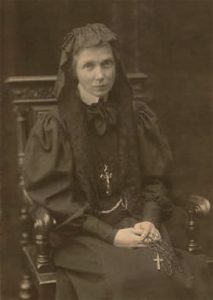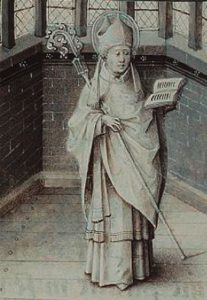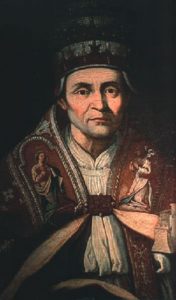May Saints

by Kilian de Lacy
 Saint Ursula Ledochowska (1865-1939)
Saint Ursula Ledochowska (1865-1939)
Guilia Ledóchowska was one of a large family. Professed at age 24, Guilia took the name Maria Ursula of Jesus and spent her whole life working to fulfil the desire she expressed at that time, “If only I knew how to love, to burn and consume myself in love.”
In the convent at Krakow, she became known as a talented teacher, sensitive to the needs of children in the changing social, political and moral conditions of the time.
With the blessing of Pope St Pius X, she left, in civilian dress, for St Petersburg, where religious life was prohibited. She and her Sisters lived secretly, under constant surveillance by the secret police, and managed to promote an educational and religious project which also worked towards improving relationships between Poles and Russians.
When war broke out in 1914, she was forced to leave Russia and headed for Scandinavia where she concentrated on education, the life of the local church, giving aid to war victims and ecumenical work. Her convent became a point of reference for people of different political and religious orientations. Her own political orientation she summed up, “My policy is love!”
In 1920, Ursula and her Sisters, accompanied by a vast number of orphan children, returned to Poland, where she developed her Congregation of Ursulines of the Sacred Agonising Heart of Jesus. Mother Ursula educated her Sisters to love God above everything else and to find God in every human being, particularly the lowly and abandoned, and in all creation.
Wherever possible, Mother Ursula founded educational and instructional work centres for the poor, and she herself wrote books and articles for children and initiated the Eucharistic Movement for them. The Sisters were always sent to catechise and work in the poorer parts of the towns they lived in. The work spread to Rome and France before her death in 1939.
Saint Ursula, help us to adapt to the changing moral conditions of our time.
 Saint Germanus of Paris (c. 496-576)
Saint Germanus of Paris (c. 496-576)
Germanus, one of France’s most revered saints, was an important, though unsuccessful, mediator in the fratricidal conflicts among several Merovingian kings.
Ordained a priest in 530 at Autun, Germanus was made abbot of the Monastery of Saint-Symphorien. Between 554 and 556 he was nominated by the Frankish king Childebert I as Bishop of Paris, where he exercised considerable moral influence on the king’s court and induced Childebert to found a Parisian church, which after his death was renamed Saint-Germain-des-Prés and became a royal burial place.
Germanus became enmeshed in the civil strife caused by rivalry between Childebert’s nephews, whom he excommunicated (567) for personal wickedness and for animosity toward his authority. He protected Queen Radegunda against the abuses of her husband, the Frankish king Chlotar I, Childebert’s brother. He energetically promoted the cult of the saints and was himself venerated as a saint immediately after his death.
Saint Germanus, teach us to be peacemakers in our society.
(Source: https://www.britannica.com)
 Pope Saint Celestine V (d. 432)
Pope Saint Celestine V (d. 432)
When Peter Angelerio’s father died, his impoverished mother nevertheless raised her twelve children well.
At age 20, Peter became a hermit, praying, reading Holy Scripture, copying books or doing hard work to avoid the devil’s temptations. He started a new order after other hermits kept coming to him for guidance.
For two years, there had been no Pope, because the Cardinals could not decide on one. Peter sent them a message to decide quickly, for God was displeased at the long delay. Then and there, they chose the holy old hermit himself at age 84! Poor Peter wept when he heard the news, but he sorrowfully accepted and took the name Celestine V.
Because he was so humble and simple, he could not say “no” to anyone, and soon matters were in great confusion. After five months as Pope, the Saint threw himself at the feet of the Cardinals, apologising for not having been capable of governing the Church and resigned.
Celestine had hoped to retire to one of his monasteries but the new Pope, for his safety, put him in a cell till he died.
(Source: http://www.catholic.org/saints/saint.php?saint_id=172)
 Entries(RSS)
Entries(RSS)